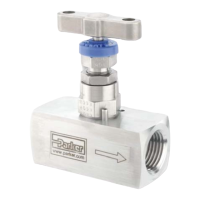Safety Guidelines for the Application, Installation and Maintenance of Solid State Control E116P
5
2.5 Rate of Rise-Voltage or Current
(DV/DT or DI/DT)
Solid state controls can be affected by rapid changes of
voltage or current if the rate of rise (DV/DT and/or DI/DT)
is greater than the maximum permissible value specified
by the manufacturer.
2.6 Surge Current
Current of a value greater than that specified by the
manufacturer can affect the solid state control. Current
limiting means may be required.
C.2.5 Rate of Rise-Voltage or Current
(DV/DT or DI/DT)
The DV/DT rating specifies the maximum rate at which
voltage may be applied to the power terminals of a solid
state device. Voltage applied at a rate exceeding the DV/
DT rating can switch the device ON without an input
signal being applied. Electrical noise with high frequency
content is one source of rapidly changing voltage.
Another common source of high DV/DT is an inductive
load that is switched off faster than the stored energy can
be dissipated. This fast switching produces “inductive
kick voltages” that might exceed the DV/DT limit.
The DI/DT rating specifies the maximum rate at which
current flow may be increased when switching from OFF
to ON. Currents that increase faster than the DI/DT
rating cause localized hot spots due to current crowding
in a small area until the entire cross section can become
conductive. This results in gradual degradation of the
device. Subsequent operations generally result in over
dissipation and short circuit failures even under normal
load conditions. The most common situations for high DI/
DT are low load impedance, or capacitance loads.
Manufacturers of solid state equipment usually include
internal means to limit the rate of rise of voltage and
current. Nonetheless, the user should be aware that
additional external means may be necessary to adjust to
the specific conditions of some installations.
C.2.6 Surge Current
The manufacturer may specify allowable surge current.
Common practice is to specify the peak sinusoidal current
that can be allowed for one-half cycle at line frequency.
The intent behind this practice is to give the user
information for selecting an appropriate fuse or other
current limiting means.
Applications that require short term overcurrent capability
(e.g., motor starting) must observe the manufacturer's
restrictions on the number of times the device can be
subjected to overcurrent in a specified time interval. The
user should be aware that this specification may vary
depending upon whether the conditions call for hot starts
or cold starts. Hot start means that the solid state
component is at or near the normal operating temperature
due to previous operation history when the overcurrent
condition occurs. Cold start means that the solid state
component is at or below 40 degrees Celsius when the
overcurrent condition occurs.

